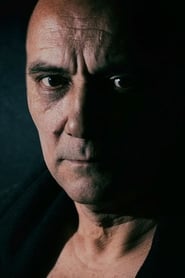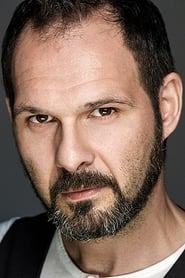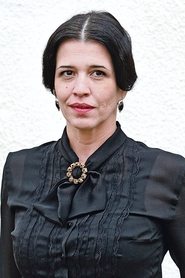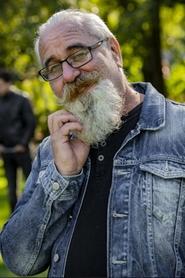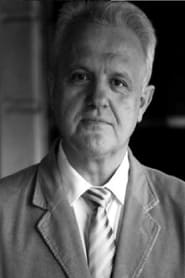
Ask Your Own Question
What is the plot?
In the small, isolated town of Flat Hill, the story begins with the arrival of a new family, the Parkers, who move into an old, dilapidated house on the outskirts. The family consists of parents, Mark and Lisa, and their teenage daughter, Emily. As they unpack, Emily discovers a strange, old journal hidden in the attic, filled with cryptic entries about the town's dark past and its residents. Intrigued, she begins to read it, unaware of the secrets it holds.
As Emily delves deeper into the journal, she learns about a series of mysterious disappearances that occurred decades ago, all linked to a local legend about a malevolent spirit said to haunt Flat Hill. The entries describe how the townsfolk tried to appease the spirit with offerings, but the disappearances continued. Emily becomes increasingly obsessed with the journal, feeling a connection to the town's history and its unresolved mysteries.
Meanwhile, Mark and Lisa struggle to adjust to their new life in Flat Hill. Mark, a writer, finds inspiration in the town's eerie atmosphere, while Lisa feels isolated and longs for the comforts of their previous home. Tensions rise between them as Lisa becomes concerned about Emily's fixation on the journal and the stories it contains. Mark dismisses her worries, believing that the journal could provide a great story for his next book.
One night, Emily decides to explore the woods behind their house, guided by the journal's descriptions of the locations tied to the town's dark history. She stumbles upon an abandoned cabin, where she finds remnants of past rituals and offerings. As she investigates, she feels a chilling presence and hears whispers calling her name. Terrified, she runs back home, shaken by the experience but more determined to uncover the truth.
The following day, Emily shares her findings with her parents, but they remain skeptical. Mark encourages her to continue her research, while Lisa insists they should leave Flat Hill. This disagreement creates a rift in the family, with Emily feeling caught in the middle. She decides to confide in her new friend, Jake, a local boy who knows about the town's legends. Jake reveals that his grandfather was one of the last people to witness the spirit, and he shares chilling stories that further fuel Emily's curiosity.
As Emily and Jake investigate together, they uncover more about the town's history, including a hidden burial ground where the townsfolk buried their offerings to the spirit. They discover that the spirit is believed to be the vengeful spirit of a young girl who was wronged by the townspeople. The more they learn, the more Emily feels a connection to the girl, believing that she must help her find peace.
One evening, during a full moon, Emily and Jake decide to perform a ritual they found in the journal, hoping to communicate with the spirit. They gather items that represent the town's past and head to the burial ground. As they begin the ritual, the atmosphere shifts, and they feel a powerful energy surrounding them. Suddenly, the spirit appears, a ghostly figure filled with sorrow and anger. Emily, feeling a deep empathy, reaches out to the spirit, trying to understand her pain.
The spirit reveals her tragic story: she was betrayed by the townsfolk, leading to her untimely death. Emily promises to help her find justice, and the spirit, in turn, warns them of a greater danger lurking in Flat Hill. As the ritual concludes, the spirit vanishes, leaving Emily and Jake shaken but resolute in their mission.
Back at home, tensions escalate between Mark and Lisa as Lisa insists they leave Flat Hill immediately. Mark, now fully invested in the town's story, refuses to abandon his work. This conflict reaches a boiling point when Lisa discovers Emily's involvement with Jake and the rituals. She confronts Emily, demanding she stop her investigations, fearing for her safety. Emily, feeling misunderstood, defies her mother and continues to work with Jake.
As the days pass, strange occurrences begin to plague the town. Residents report sightings of the spirit, and more people go missing. The atmosphere grows tense, and fear spreads among the townsfolk. Emily and Jake realize that the spirit's unrest is causing these events, and they must act quickly to resolve the situation before more harm is done.
Determined to confront the town's past, Emily organizes a meeting with the remaining townsfolk, urging them to acknowledge their history and seek forgiveness for their ancestors' actions. Many are resistant, fearing the spirit's wrath, but a few, including Jake's grandfather, support her. They agree to hold a town gathering at the burial ground to honor the spirit and make amends.
On the night of the gathering, the townsfolk gather at the burial ground, where Emily leads a ceremony of remembrance. She speaks passionately about the spirit's suffering and the need for healing. As they perform the ritual, the spirit appears once more, this time more peaceful. The townsfolk, moved by Emily's words, begin to express their remorse and seek forgiveness.
In a climactic moment, the spirit forgives the townsfolk, and the atmosphere shifts from one of fear to one of relief. The missing residents begin to reappear, unharmed but confused. The town is finally free from the spirit's curse, and a sense of unity begins to form among the residents.
In the aftermath, Mark and Lisa reconcile, realizing the importance of supporting Emily's journey. They decide to stay in Flat Hill, embracing their new life and the community that has come together. Emily, now a local hero, continues to explore the town's history, determined to ensure that the past is never forgotten. The series ends with a sense of hope and renewal, as Flat Hill begins to heal from its dark history.
What is the ending?
In the ending of "Flat Hill," the main characters confront their pasts and the choices they have made. The climax reveals deep-seated conflicts and resolutions, leading to a bittersweet conclusion where some characters find closure while others face the consequences of their actions.
As the final episodes unfold, we see the characters grappling with their relationships and the impact of their decisions. The protagonist, Sarah, comes to terms with her family's legacy and the weight of expectations placed upon her. In a pivotal scene, she stands at the edge of Flat Hill, reflecting on her journey and the sacrifices made by those before her. This moment of introspection is marked by a hauntingly beautiful sunset, symbolizing both an ending and a new beginning.
Meanwhile, Jake, who has been struggling with his own demons, makes a choice that ultimately leads to his redemption. He reaches out to Sarah, seeking forgiveness for past mistakes. Their conversation is charged with emotion, as they both acknowledge the pain they have caused each other. The scene is set against the backdrop of the town, where the community gathers for a final event, underscoring the theme of unity and healing.
In the closing moments, we see the characters moving forward. Sarah decides to embrace her own path, stepping away from the shadows of her family's expectations. Jake, having found a sense of purpose, commits to helping others in the community, signaling his transformation. The series ends with a montage of the characters finding their places in the world, interspersed with scenes of Flat Hill thriving, suggesting hope and resilience.
As the screen fades to black, the audience is left with a sense of closure, yet the complexities of life and relationships linger, inviting reflection on the journey of each character.
In the final episodes of "Flat Hill," the narrative builds towards a climactic resolution that intertwines the fates of the main characters, Sarah and Jake, against the backdrop of their small town.
Scene 1: The Gathering at Flat Hill The episode opens with a panoramic view of Flat Hill, the sun setting in a blaze of orange and purple hues. The townspeople are gathered for a community event, a festival that celebrates their heritage. Sarah stands at the edge of the hill, her silhouette framed by the vibrant sky. She is lost in thought, reflecting on her family's history and the burdens she has carried. The camera zooms in on her face, capturing the conflict within her--pride, fear, and a longing for freedom.
Scene 2: Confrontation with the Past As the festival unfolds, Jake approaches Sarah. He is visibly nervous, his hands fidgeting as he tries to find the right words. The tension is palpable; the air is thick with unspoken emotions. Jake admits to his past mistakes, expressing regret for how he treated Sarah and the pain he caused. Sarah listens, her expression a mix of skepticism and hope. The dialogue is raw and honest, revealing their vulnerabilities. The scene is intercut with shots of the festival, highlighting the contrast between the joy of the community and the turmoil within them.
Scene 3: A Moment of Forgiveness In a quiet corner of the festival, away from the noise, Sarah and Jake share a heartfelt conversation. The camera captures their body language--Sarah's guarded stance softening as she begins to understand Jake's sincerity. She reveals her own struggles with her family's expectations, the pressure to conform weighing heavily on her. As they talk, the emotional walls between them begin to crumble. The scene crescendos as Sarah tentatively offers forgiveness, a moment that feels both liberating and terrifying. The background music swells, enhancing the emotional gravity of their exchange.
Scene 4: Embracing Change The festival reaches its peak, with laughter and music filling the air. Sarah, now more resolute, decides to step away from the path laid out for her by her family. She takes a deep breath, looking out over the crowd, and realizes that she wants to forge her own identity. The camera captures her determination as she walks back into the heart of the festival, a newfound sense of purpose radiating from her.
Scene 5: Jake's Redemption Meanwhile, Jake finds himself drawn to a group of younger townsfolk who are struggling with their own issues. He steps in to offer guidance, sharing his experiences and the lessons he has learned. The scene is filled with warmth as he connects with them, his transformation evident. The townspeople begin to see him in a new light, and the camera lingers on his face, reflecting a mix of humility and hope.
Scene 6: The Final Montage As the festival winds down, the screen transitions to a montage of the characters moving forward. Sarah is seen volunteering in the community, helping to organize events that celebrate individuality and creativity. Jake is shown mentoring the youth, his smile genuine as he engages with them. The town of Flat Hill is depicted thriving, with scenes of laughter, collaboration, and a sense of belonging. The final shot captures Sarah and Jake standing together, looking out over the hill, a symbol of their shared journey and the promise of new beginnings.
Scene 7: The Fade to Black The series concludes with the camera pulling away from Flat Hill, the vibrant colors of the sunset fading into darkness. The audience is left with a lingering sense of hope, the complexities of life and relationships echoing in their minds. The final moments invite reflection on the characters' growth and the enduring spirit of the community, encapsulating the essence of their journey.
Is there a post-credit scene?
In the 2013 TV show "Flat Hill," there is indeed a post-credit scene that adds an intriguing layer to the narrative.
As the credits roll, the screen fades to black before transitioning to a dimly lit room filled with old photographs and newspaper clippings pinned to a corkboard. The camera slowly zooms in on a particular photo of the main characters, gathered together during a pivotal moment in the series. Their expressions are a mix of joy and uncertainty, hinting at the complexities of their relationships.
Suddenly, the scene shifts to a shadowy figure standing in front of the corkboard, their face obscured. The figure reaches out and touches one of the clippings, which details a mysterious event that occurred in Flat Hill years ago. A voice, low and gravelly, mutters, "They think it's over, but it's just the beginning."
The camera then cuts to a close-up of the figure's hand, revealing a small, intricately carved wooden token that resembles a symbol seen throughout the series. The scene ends with a quick flicker of the lights, casting an eerie glow over the room, before cutting to black, leaving viewers with a sense of foreboding and anticipation for what might come next.
This post-credit scene effectively teases potential future conflicts and deepens the lore of Flat Hill, inviting speculation about the unresolved mysteries that linger in the town.
How does the relationship between Sarah and her childhood friend, Mark, evolve throughout the series?
Initially, Sarah and Mark share a strained relationship, filled with unspoken tension and unresolved feelings. As they navigate the challenges of their past and the secrets that emerge, their bond deepens. Mark's unwavering support helps Sarah confront her fears, leading to a rekindling of their friendship and a potential romantic connection.
What motivates the main character, Sarah, to return to Flat Hill after so many years?
Sarah's return to Flat Hill is driven by a mix of nostalgia and unresolved issues from her past. She feels a deep emotional pull to confront the memories of her childhood, particularly the loss of her younger brother, which has haunted her for years. The town holds both painful memories and a sense of belonging that she desperately seeks.
What role does the mysterious figure known as 'The Watcher' play in the story?
The Watcher serves as a haunting presence throughout the series, representing the unresolved traumas of the town. This figure appears at pivotal moments, often when Sarah is grappling with her past. The Watcher's cryptic messages and actions push Sarah to confront her fears and ultimately seek closure.
What secrets does Sarah uncover about her brother's disappearance?
As Sarah delves deeper into her brother's disappearance, she uncovers a web of lies involving several townspeople. She learns that her brother was involved in a secretive group that was exploring the darker aspects of Flat Hill's history. This revelation not only shatters her understanding of her brother but also forces her to confront the town's hidden past.
How does the town of Flat Hill itself act as a character in the story?
Flat Hill is depicted as a living entity, with its own mood and atmosphere that reflects the emotional states of the characters. The town's eerie landscapes, abandoned buildings, and the ever-present fog create a sense of isolation and mystery. As Sarah navigates her journey, the town's history and its impact on the residents become integral to her quest for understanding and healing.
Is this family friendly?
"Flat Hill," produced in 2013, is a drama that explores complex themes and character dynamics, which may not be suitable for all audiences, particularly children or sensitive viewers.
-
Emotional Turmoil: The show delves into deep emotional struggles, including themes of loss, betrayal, and familial conflict, which may be distressing for younger viewers.
-
Intense Confrontations: There are several scenes featuring heated arguments and confrontations between characters that can be quite intense and may evoke feelings of anxiety.
-
Depictions of Grief: The series includes moments that portray characters dealing with grief and mourning, which can be heavy and potentially upsetting.
-
Substance Use: There are instances of characters engaging in substance use, which may not be appropriate for younger audiences.
-
Mature Themes: The narrative touches on issues such as infidelity and moral dilemmas, which may be difficult for children to understand or process.
Overall, while "Flat Hill" offers rich storytelling and character development, its emotional depth and mature themes may not be suitable for all viewers, particularly children or those sensitive to such content.








